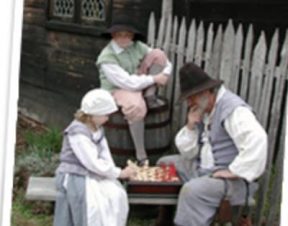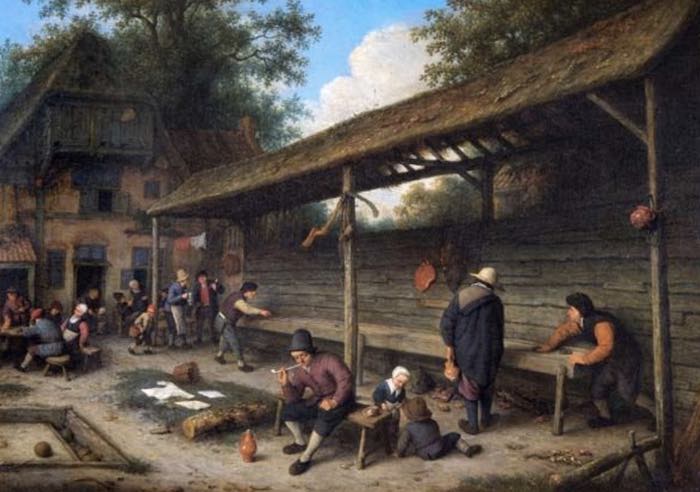Some Colonial Games and Toys That You Should Know
Brought to you from Historic St. Mary’s City in Southern MD, where vacation is both fun and educational.
 During the colonial era, most kids had high responsibilities and lesser resources to play with compared to contemporary children. Also, the games and toys back then were less sophisticated than what we have now. In colonial times, children had to help with household chores, such as fetching water, sewing, caring for livestock, carrying wood, cooking, among others. So, colonial kids have less time to play. Nevertheless, during their leisure time, they still have some colonial games and toys that they often use to catch fun. Kindly read further to learn about the common games and toys during the colonial times.
During the colonial era, most kids had high responsibilities and lesser resources to play with compared to contemporary children. Also, the games and toys back then were less sophisticated than what we have now. In colonial times, children had to help with household chores, such as fetching water, sewing, caring for livestock, carrying wood, cooking, among others. So, colonial kids have less time to play. Nevertheless, during their leisure time, they still have some colonial games and toys that they often use to catch fun. Kindly read further to learn about the common games and toys during the colonial times.
Although less sophisticated, the classical children had toys as the modern kids do now. Most toys back then had educational values as well as helps develop the physical abilities of the kids, such as speed and strength. Tag, swimming, and ball games do not only improve the running and strength qualities of the kids but also prepare for the physical demands of adulthood. While some games are less physical, they helped enhance the problem-solving and analytical skills of the colonial kids.
- Turning Chores into Competitive games
Although during the colonial era, the children had fewer toys to play with, still, they never shy away from engaging competitive games. Often than not, the kids would be seen turning their daily responsibilities into games and challenging one another to see who is the faster or the best. Duties such as fetching woods from the forest were usually turned into a game that tests speed and strength. Additionally, most families back then were extended families. Thus, kids often had relatives and companions to play with. Mostly, the kids would gather together to sing their favorite songs and rhymes.
During the classic days, kids used to create their own sporting events, such as leapfrog, relay racing, tag, “London Bridge is Falling Down,” among others. Also, there were seasonal favorites such as swimming and sledding. And back then, you would see kids performing jumping with a high rope and hopscotch. Most of these events still exist in modern times, and many are now competitive activities at the highest level, such as the Olympics.
The majority of toys during colonial times were either created by the kids or their parents. Some of these toys include dolls, archery sets, peg games, ball and cup, Jacob’s Ladder, and spinning tops. Most of them were practical and straightforward to practice. Also, hoops were very common among the children back in those days. Sometimes, you might see the kids running and rolling the hoops or tossing and catching them – it all depends on what’s common in a specific area. Colonial kids were taught how to aim and hunt wild animals when they grow old with arching toys. While the colonial boys preferred ball playing and kite flying, the colonial girls would play with their dolls or sew.
Another colonial game back then is the dice games. Unlike the contemporary dice game, it used to be a simple game with repetitive rolls. Also, colonial kids loved marbles as they were used as the basis for many colonial games. Jacks and Wooden peg games served as logic and strategy games in classical times as one or many children can engage it at a go.
Conclusion
We are confident that many of the classical games and tops still exist in this modern time. For many years, most of the historical games have survived and evolved to become sophisticated events. You would even see some in international games and sports, such as high jumping, football, archery, racing, among others.
Visit Historic St. Mary’s City in Southern MD during your next family fun vacation.
AFTER READING THIS ARTICLE OTHERS READ:
Just For Fun



 During the colonial era, most kids had high responsibilities and lesser resources to play with compared to contemporary children. Also, the games and toys back then were less sophisticated than what we have now. In colonial times, children had to help with household chores, such as fetching water, sewing, caring for livestock, carrying wood, cooking, among others. So, colonial kids have less time to play. Nevertheless, during their leisure time, they still have some colonial games and toys that they often use to catch fun. Kindly read further to learn about the common games and toys during the colonial times.
During the colonial era, most kids had high responsibilities and lesser resources to play with compared to contemporary children. Also, the games and toys back then were less sophisticated than what we have now. In colonial times, children had to help with household chores, such as fetching water, sewing, caring for livestock, carrying wood, cooking, among others. So, colonial kids have less time to play. Nevertheless, during their leisure time, they still have some colonial games and toys that they often use to catch fun. Kindly read further to learn about the common games and toys during the colonial times.